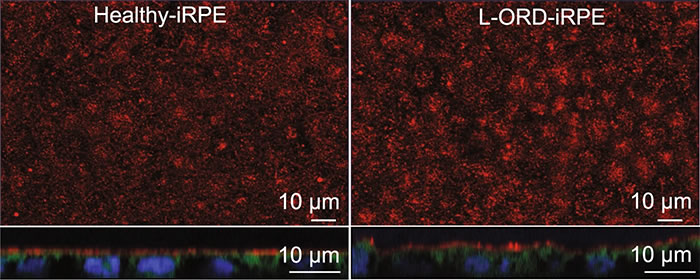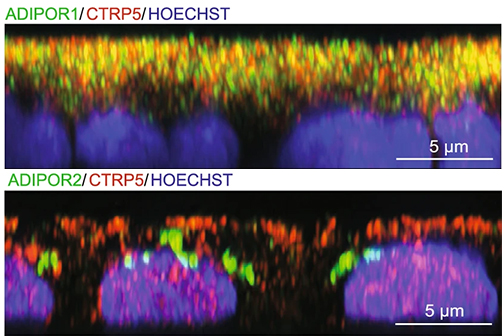LSU Health Contributes to Research Suggesting Late-Onset Retinal Degeneration Mechanism & Potential Rx
December 9, 2021

Late-onset retinal degeneration is an autosomal dominant disorder caused by the substitution of a different amino acid in the protein made by the CTRP5 gene. Earlier discoveries by LSU Health Neuroscience researchers on retina lipids that protect sight helped lay the groundwork for the current study. Their collaborative data suggest a mechanism for the dominant behavior of the CTRP5 gene mutation, which had been unclear.
The protein made by CTRP5 has been identified as a biomarker for obesity and chronic obstructive pulmonary disease, suggesting a role for this protein in regulating cellular fatty acid metabolism. It has been suggested that an enzyme called 5’AMP-activated protein kinase (AMPK) activates CTRP5 to regulate fatty acid metabolism and energy stability. Retinal pigment epithelium (RPE) cells take up photoreceptor outer segments, which have an abundance of fatty acids and lipids.
“Mechanistically, reduced secretion of CTRP5 and predicted lower binding affinity of mutant CTRP5 to the receptor for the gene that makes lipoproteins that carry fats in the bloodstream is the likely reason for the genetically dominant behavior of this disease,” says Dr. Bazan, who also holds the Ernest C. and Yvette C. Villere Chair for the Study of Retinal Degeneration.
The researchers demonstrated that a gene therapy approach -- overexpressing CTRP5 -- overcame lower levels of CTRP5 secretion in the cells of patients with late-onset retinal degeneration. They also tested the anti-diabetic drug metformin to determine if it influenced AMPK activity and could reverse RPE deterioration. Metformin has been shown to delay retinal degeneration in mice and to protect the RPE. The researchers found that metformin was effective in re-sensitizing AMPK to changes in cellular stress, restoring energy stability, and alleviating the disease’s cellular phenotypes.Bazan concludes, “The study offers novel insights into the role of CTRP5 in the RPE and how the pathogenic variant in late-onset retinal degeneration causes dominant disease and provides further evidence that metformin can be a beneficial intervention for its treatment.”
The LSU Health New Orleans researchers also include Drs. Bokkyoo Jun, Khanh V. Do, Marie-Audrey Kautzman Guerin, and Jorgelina Calandria, of the Neuroscience Center of Excellence. Other authors were from the National Eye Institute and the University of Pennsylvania.The research was supported by the National Eye Institute of the National Institutes of Health and the Eye Ear Nose Throat (EENT) Foundation of New Orleans.
______________________________________________________________________________________________________________ LSU Health Sciences Center New Orleans (LSU Health New Orleans) educates Louisiana's health care professionals. The state's health sciences university leader, LSU Health New Orleans includes a School of Medicine with branch campuses in Baton Rouge and Lafayette, the state's only School of Dentistry, Louisiana's only public School of Public Health, and Schools of Allied Health Professions, Nursing, and Graduate Studies. LSU Health New Orleans faculty take care of patients in public and private hospitals and clinics throughout the region. In the vanguard of biosciences research, the LSU Health New Orleans research enterprise generates jobs and enormous annual economic impact. LSU Health New Orleans faculty have made lifesaving discoveries and continue to work to prevent, advance treatment or cure disease. To learn more, visit http://www.lsuhsc.edu, http://www.twitter.com/LSUHealthNO, or http://www.facebook.com/LSUHSC.
